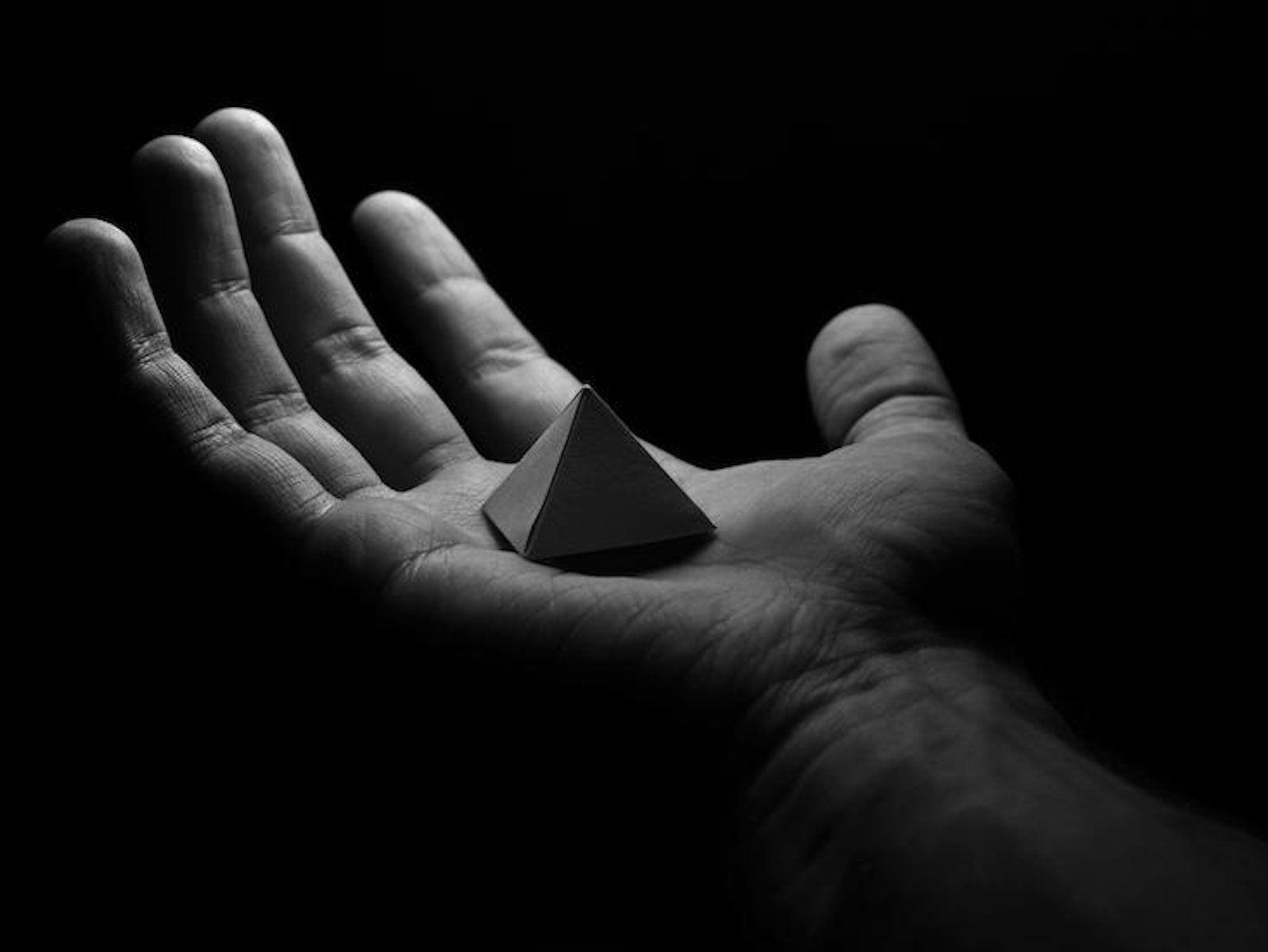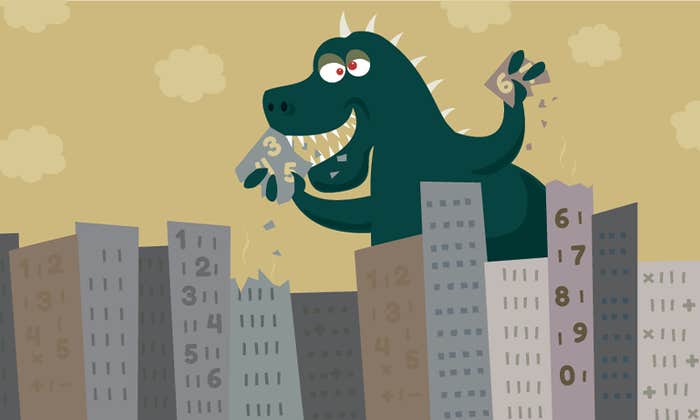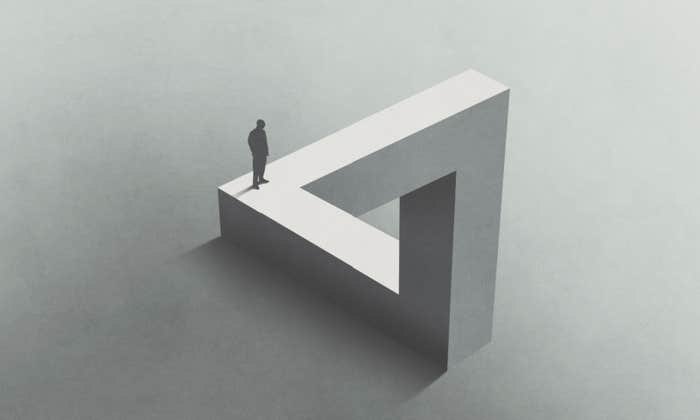Bernard Morin developed glaucoma at an early age and was blind by the time he was six years old. Despite his inability to see, Morin went on to become a master topologist—a mathematician who studies the intrinsic properties of geometric forms in space—and earned renown for his visualization of an inside-out sphere.
For sighted people, it can be difficult to imagine learning math, let alone mastering it, without vision (or even with it). In grade schools, mathematics instruction tends to rely heavily on visual aids—our fingers, pieces of pie, and equations scribbled on paper. Psychology and neuroscience support the notion that math and sight are tightly intertwined. Studies show that mathematical abilities in children are highly correlated with their visuospatial capacities—measured by proficiency in copying simple designs, solving picture puzzles, and other tasks—and that brain areas involved in visual processes are also activated during mental mathematics. Researchers have even proposed a “visual sense of number,” the idea that the visual system in our brain is capable of numerical estimation.
And yet, Bernard Morin has plenty of company—some of our greatest mathematicians were blind. For example, Leonhard Euler, one of the most prolific mathematicians in history, was blind during the last 17 years of his life, and produced nearly half of his work during this time. English mathematician Nicholas Saunderson went blind not long after he was born, but managed to become the Lucasian professor of mathematics at Cambridge University, a position earlier held by Newton and now occupied by theoretical astrophysicist Stephen Hawking.
Is there something that allows the blind to excel? The leading theory is that because they cannot rely on visual cues or written materials to remember things, they develop stronger working memory than the sighted, which is critical to doing well at math. Another potential explanation is that because blind children spend a lot of time touching and manipulating objects, they learn to interpret numerical information with multiple senses, giving them an advantage.
The blind person has a relatively unspoiled intuition of three-dimensional space.
A number of studies suggest that perhaps both conditions are at play. In the early 2000s, Julie Castronovo, along with a group of psychologists at the Université Catholique de Louvain, in Belgium, conducted some of the first investigations to test the basic numerical abilities of the blind. To their surprise, they found that not only were these individuals unimpaired, the average blind subject possessed even sharper skills than the average test subject who could see.
“People who have lost vision from a very early age have developed some compensatory mechanism,” says Castronovo, who is now studying mathematical cognition at the University of Hull, in England. That compensatory mechanism seems to do a better job at aiding them in certain kinds of math than vision does—an astonishing finding, she says.
Scientists are still puzzling out what that compensatory mechanism is and how it works. Earlier this year, Olivier Collignon, a psychologist who studies blind cognition at the Université Catholique de Louvain and the University of Trento, in Italy, and his colleagues, published findings that suggest sighted individuals and people who were born blind or became blind early in life perform equally well on simple math problems. There was one key difference—the blind participants actually outperformed their sighted counterparts on more difficult math problems, like addition and subtraction that require carrying over a number (like 45 + 8 or 85 –9); these are considered more difficult than those that don’t (like 12 + 31 or 45 + 14). According to Collignon, the more a task relies on the ability to manipulate numbers in the abstract, like carrying over a number, the more blind individuals’ compensatory mechanisms are engaged.
Collignon and his colleagues had previously found that blind and sighted people experience numbers in completely different ways, in a physical sense. In a 2013 study, the researchers created a clever manipulation of a task typically used to test a perceptual bias called Spatial Numerical Association of Response Codes, or SNARC.
The standard SNARC test comprises two tasks. In the first, participants are instructed to hit a button placed near their left hands when they hear a number smaller than five and to hit a button placed near their right hands when they hear a number bigger than five; in the second, these instructions are reversed (the left hand hits the button after hearing the larger number). This test usually shows that both blind and sighted research subjects react more quickly to small numbers with their left hands than their right, and more quickly to large numbers with their right hands than their left.
But in Collignon’s modified SNARC test, the subjects were asked to cross their hands (the left hand to be used with the right-side button and vice versa). For sighted participants, small numbers now elicited a quicker response from the right hand, since it was in front of the left button. But blind participants’ quick responses switched sides. This revealed that instead of mapping numbers onto visual space, like sighted people, the blind were mapping them onto their bodies.
Castronovo believes that teaching methods that require more physical interaction with objects could help sighted children learn math better. She’s currently investigating whether certain hands-on tools such as the Numicon, on which differently colored and differently shaped holes correspond to different numbers, will help all children develop better mathematical skills.
Meanwhile, Collignon and his colleague Virginie Crollen, at the Université Catholique de Louvain, have been visiting classrooms of blind children around Belgium to see whether there is some common way they learn that differs from that of sighted children. According to Collignon, the abacus, which many blind children still use to learn math, may enhance their numerical abilities. In parts of China and Japan where schools still use abacuses, sighted children are capable of doing especially impressive mental mathematics.
Collignon and his colleagues go so far as to suggest that vision may actually hinder the sighted from reaching full mathematical potential. This is thought to be particularly true in the realm of geometry. Sighted people sometimes misapprehend three-dimensional space because the retina projects it onto just two dimensions. Many optical illusions arise out of these misapprehensions. The blind person, by comparison, has a relatively unspoiled intuition of three-dimensional space.
“We teach numbers in a visual fashion because we are visual mammals,” says Collignon. “But maybe it creates a framework that’s limiting our capabilities—maybe being blind…removes some of the constraints in the way you think about numbers.”
Diana Kwon is a Berlin-based freelance science journalist. Follow her on Twitter @DianaMKwon.
The lead photograph is courtesy of István Berta via Flickr.






























